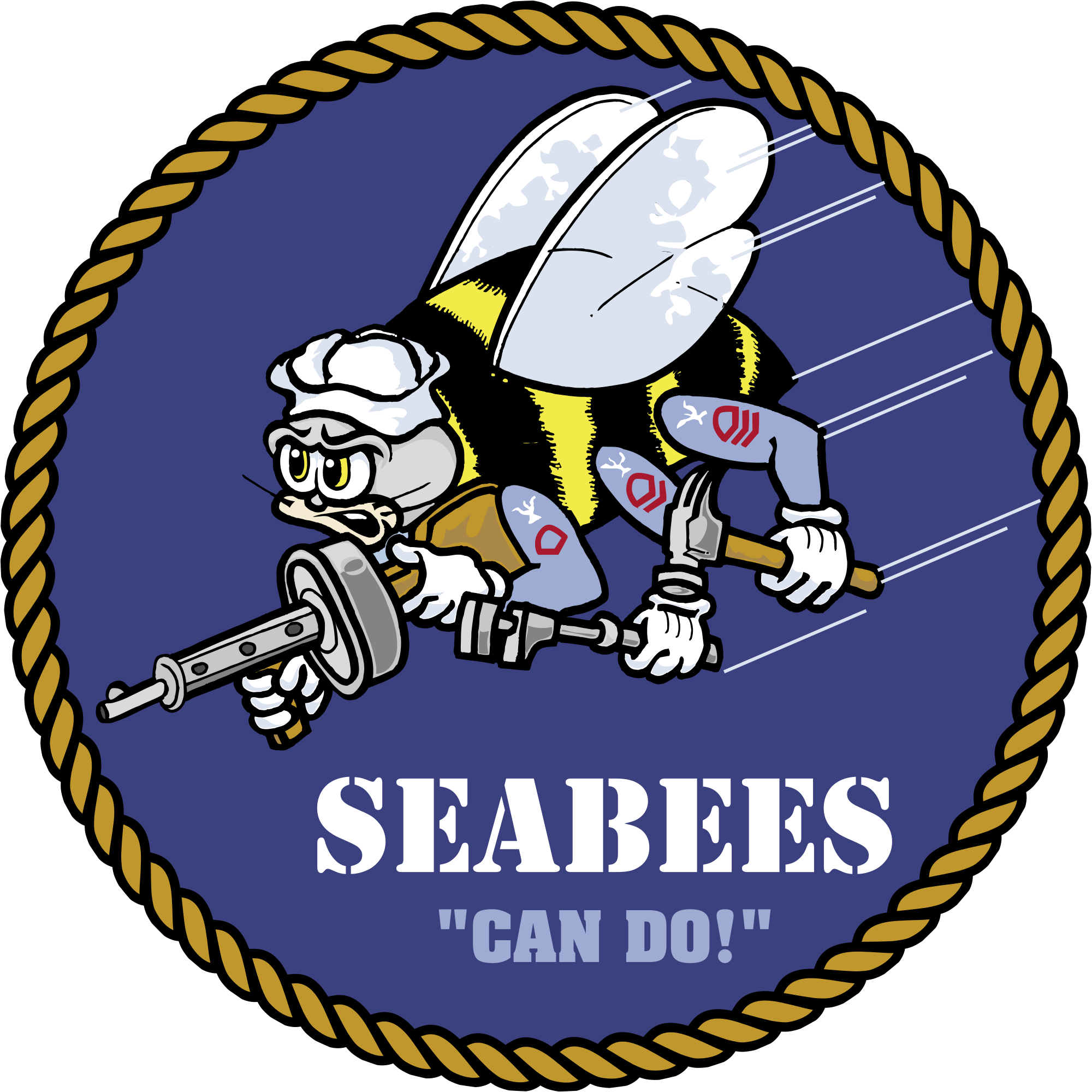Who Exactly Are the 'SEABEES' and Why Have You Not Heard Of Them Before Now?
Motto: "Can Do!"
You have not heard of the 'SEABEES'?
Not a surprise!
Most of their work goes unnoticed in the mainstream media.
You may, however, be hearing more about them in the future, particularly in South East Asia, Africa, and in the Pacific.
The below is extracted from
You should visit any of the links for more information
PE
Have A Nice Day!
by the U.S. Navy Band (.wav file - 386.7 kB) | Music by Peter DeRose Words by Sam M. Lee |
Seabees -- their simple motto tells the story: "We build, we fight". From the island hopping of World War II and the cold of Korea, to the jungles of Vietnam, to the mountains of Bosnia, and to the deserts of Afghanistan and Kuwait, the Seabees have built entire bases, bulldozed and paved thousands of miles of roadway and airstrips, and accomplished a myriad of construction projects.
In December 1941, with an eye on the developing storm clouds across both oceans, Rear Admiral Ben Moreell, Chief of the Navy's Bureau of Yards and Docks, recommended establishing Naval Construction Battalions. With the attack on Pearl Harbor and the U.S. entrance into the war, he was given the go-ahead.The earliest Seabees were recruited from the civilian construction trades and were placed under the leadership of the Navy's Civil Engineer Corps. Because of the emphasis on experience and skill rather than on physical standards, the average age of Seabees during the early days of the war was 37.
With the general demobilization following the war, the Construction Battalions were reduced to 3,300 men on active duty by 1950. Between 1949 and 1953, Naval Construction Battalions were organized into two types of units: Amphibious Construction Battalions (PHIBCBs) and Naval Mobile Construction Battalions (NMCBs).
The Korean Conflict saw a call-up of more than 10,000 men. The Seabees landed at Inchon with the assault troops. They fought enormous tides as well as enemy fire and provided causeways within hours of the initial landings. Their action here and at other landings emphasized the role of the Seabees and there was no Seabee demobilization when the truce was declared.
Following Korea, the Seabees embarked on a new mission. From providing much needed assistance in the wake of a devastating earthquake in Greece in 1953 to providing construction work and training to underdeveloped countries, the Seabees became "The Navy's Goodwill Ambassadors". Seabees built or improved many roads, orphanages and public utilities in many remote parts of the world.
In 1971, the Seabees began their largest peacetime construction on Diego Garcia, a small atoll in the Indian Ocean. This project took 11 years and cost $200 million. The complex accomodates the Navy's largest ships and the biggest military cargo jets. This base proved invaluable when Iraq invaded Kuwait in August 1990 and Operations Desert Shield and Desert Storm were launched.
During the Gulf War, more than 5,000 Seabees (4,000 active and 1,000 reservists) served in the Middlle East. In Saudi Arabia, Seabees built 10 camps for more than 42,000 personnel; 14 galleys capable of feeding 75,000 people; and 6 million square feet of aircraft parking apron.
Naval Construction Forces -- The gateway site for Naval Construction Battalion commands
Reviewed: 12 August 2009
